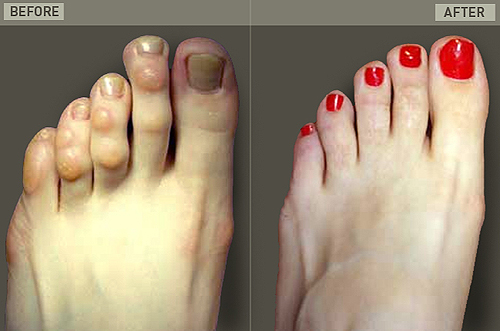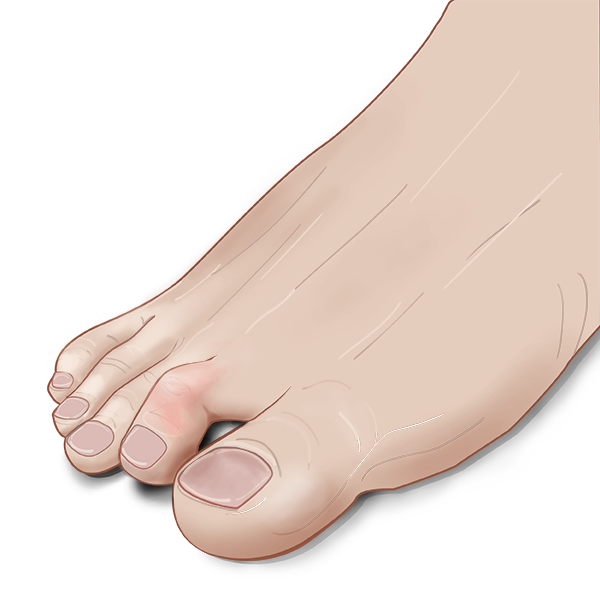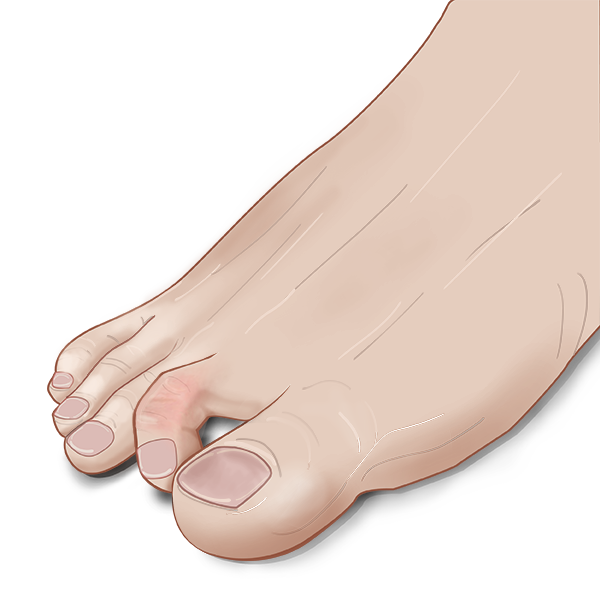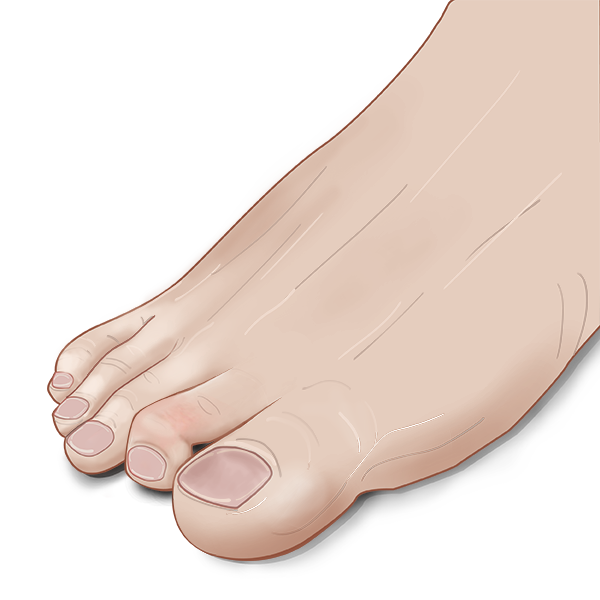Hammertoe Treatment in Cleveland, Ohio
Hammertoe is a contracture–or bending–of one or both joints of the second, third, fourth, or fifth (little) toes. This abnormal bending can put pressure on the toe when wearing shoes, causing problems to develop. Common symptoms of hammertoes include:
- Pain or irritation of the affected toe when wearing shoes.
- Corns (a buildup of skin) on the top, side, or end of the toe, or between two toes. Corns are caused by constant friction against the shoe. They may be soft or hard, depending upon their location.
- Calluses (another type of skin buildup) on the bottom of the toe or on the ball of the foot.
Corns and calluses can be painful and make it difficult to find a comfortable shoe. But even without corns and calluses, hammertoes can cause pain because the joint itself may become dislocated.
Hammertoes usually start out as mild deformities and get progressively worse over time. In the earlier stages, hammertoes are flexible and the symptoms can often be managed with noninvasive measures.
But if left untreated, hammertoes can become more rigid and will not respond to non-surgical treatment. Corns are more likely to develop as time goes on, and corns never really go away, even after trimming. In more severe cases of hammertoe, open sores may form.
Because of the progressive nature of hammertoes, they should receive early attention. Hammertoes never get better without some kind of intervention.
What Causes Hammertoe?
The most common cause of hammertoe is a muscle/tendon imbalance. This imbalance, which leads to a bending of the toe, results from mechanical (structural) changes in the foot that occur over time in some people.
Hammertoes are often aggravated by shoes that don’t fit properly–for example, shoes that crowd the toes. And in some cases, ill-fitting shoes can actually cause the contracture that defines hammertoe. For example, a hammertoe may develop if a toe is too long and is forced into a cramped position when a tight shoe is worn.
Occasionally, hammertoe is caused by some kind of trauma, such as a previously broken toe. In some people, hammertoes are inherited.
Techniques for In-office Hammertoe Surgery
IN OFFICE FLEXOR RELEASE TO CORRECT HAMMETOES
This operation is for hammer, mallet or curly toes. The deformity may cause pain and callosities (corns) over the joints or at the tip of the toe. It is caused by tightness of the long flexor tendon.
The operation is performed through a small (5mm) incision underneath the toe, in the skin crease. The long flexor tendon is lengthened, leaving the short flexor intact, with minimal loss of toe function. The small incision is dressed for 24 hours without the need for sutures.
The operation is a minor procedure and carried out with a local anesthetic as an in-office procedure.
Ideal candidates for tendon release surgery are those who have a condition that doesn’t respond to non-surgical options such as casts, splints, or stretching exercises. Infection
Risks include but are not limited to infection this is a very small operation with very little chance of infection. If it does occur, a short course of antibiotics should eradicate it. Nerve damage the digital nerves are close to the incision, and maybe injured. This is uncommon but will leave a small patch of numbness at the toe. Muscle weakness there is a negligible loss of function due to the division of this tendon, especially if the tendon is snapped from early activity. The intact short flexor allows good toe function.
Tendon release has a high success rate, and most people regain the full use of their muscles after the procedure.
The procedure requires a 30 minute appointment and is usually covered by major insurance plans!

Hammertoe

Claw Toe

Mallet Toe

